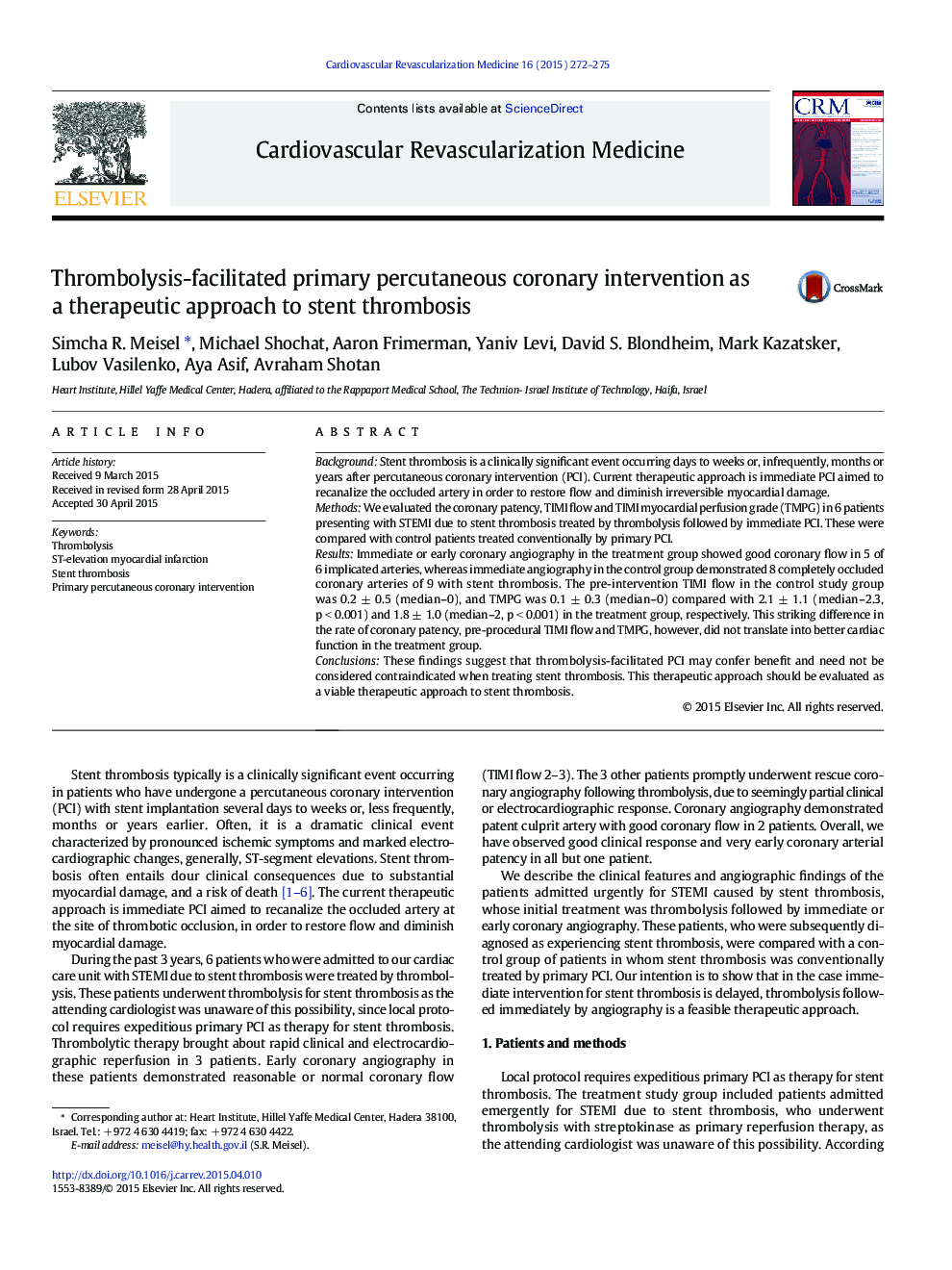| Article ID | Journal | Published Year | Pages | File Type |
|---|---|---|---|---|
| 2836932 | Cardiovascular Revascularization Medicine | 2015 | 4 Pages |
BackgroundStent thrombosis is a clinically significant event occurring days to weeks or, infrequently, months or years after percutaneous coronary intervention (PCI). Current therapeutic approach is immediate PCI aimed to recanalize the occluded artery in order to restore flow and diminish irreversible myocardial damage.MethodsWe evaluated the coronary patency, TIMI flow and TIMI myocardial perfusion grade (TMPG) in 6 patients presenting with STEMI due to stent thrombosis treated by thrombolysis followed by immediate PCI. These were compared with control patients treated conventionally by primary PCI.ResultsImmediate or early coronary angiography in the treatment group showed good coronary flow in 5 of 6 implicated arteries, whereas immediate angiography in the control group demonstrated 8 completely occluded coronary arteries of 9 with stent thrombosis. The pre-intervention TIMI flow in the control study group was 0.2 ± 0.5 (median–0), and TMPG was 0.1 ± 0.3 (median–0) compared with 2.1 ± 1.1 (median–2.3, p < 0.001) and 1.8 ± 1.0 (median–2, p < 0.001) in the treatment group, respectively. This striking difference in the rate of coronary patency, pre-procedural TIMI flow and TMPG, however, did not translate into better cardiac function in the treatment group.ConclusionsThese findings suggest that thrombolysis-facilitated PCI may confer benefit and need not be considered contraindicated when treating stent thrombosis. This therapeutic approach should be evaluated as a viable therapeutic approach to stent thrombosis.
